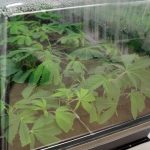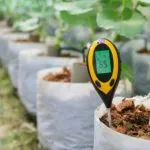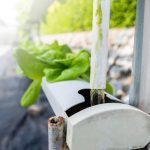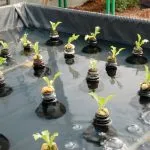In the world of hydroponics, water temperature plays a crucial role in the growth and health of your plants. It can directly impact the availability and absorption of nutrients, the growth rate of your plants, and the overall success of your hydroponic system. To ensure the best possible results, it’s essential to be aware of the ideal temperature range for your plants and maintain that range consistently throughout your growing cycles.
When it comes to most plants, the ideal water temperature for hydroponics sits somewhere in the range between 60-80 degrees Fahrenheit (15-26 degrees Celsius). This range provides an optimal setting for healthy root development and efficient nutrient uptake. However, it’s important to note that the ideal temperature may vary depending on the specific plants you’re growing. For instance, certain plants like cucumbers and tomatoes may prefer slightly cooler temperatures around 60 degrees Fahrenheit.
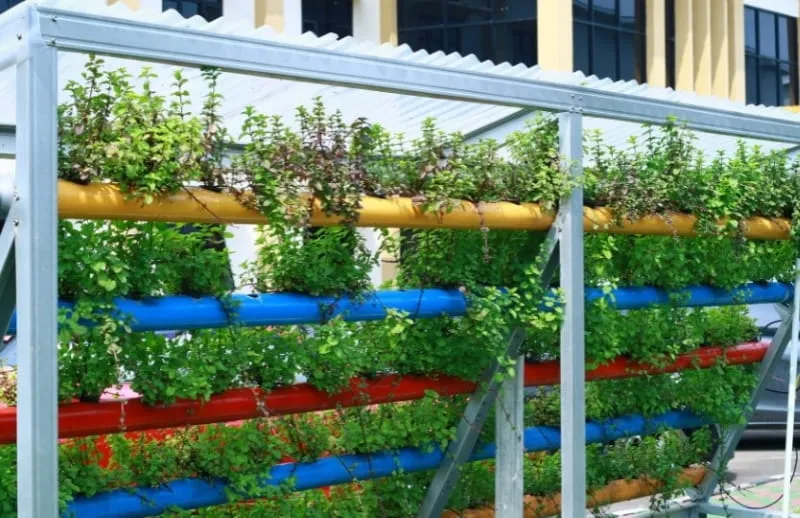
By understanding the importance of water temperature in your hydroponic system, you will be better equipped to provide the ideal conditions for your plants to thrive. Maintaining consistent temperature ensures proper nutrient absorption and promotes strong, healthy growth for a successful harvest. So, keep a close eye on your water temperature and make the necessary adjustments as needed to create the perfect environment for your plants.
- Importance of Water Temperature in Hydroponics
- Effects of Extreme Water Temperatures on Plant Growth
- Specific Temperature Requirements for Different Crops
- Monitoring and Controlling Water Temperature
- How To Maintain Water Temperature In Hydroponics
- Factors Affecting Water Temperature
- Nutrients and Their Relationship with Water Temperature
- Frequently Asked Questions
Importance of Water Temperature in Hydroponics
Plant Growth and Development
Managing water temperature plays a crucial role in the success of your hydroponic system. It directly affects plant growth and development. The ideal hydroponic water temperature generally falls between 15°C-26°C (60°F-80°F). Maintaining this temperature range ensures optimal conditions for your plants’ metabolism, allowing them to grow strong and healthy.
If the water temperature gets too high, it can lead to heat stress, reducing your plants’ ability to photosynthesize and leading to slow growth or even death. On the other hand, too low temperatures can slow down plant metabolism, causing reduced nutrient uptake and possible root damage.
Nutrient Uptake
In your hydroponic system, the water temperature plays a significant role in nutrient uptake. Proper nutrient absorption allows plants to grow efficiently, which means you can expect faster growth and higher yields.
When the water temperature gets too cold, nutrient uptake slows down. Cold nutrient solutions can also lead to nutrient imbalances and deficiencies, hampering plant health. Meanwhile, high water temperatures might increase the risk of pathogen growth, especially harmful bacteria, and fungi that thrive in warm, nutrient-rich environments.
Higher temperature increases electrical conductivity or EC, which also relates to nutrient uptake. What does EC mean in hydroponics? Find out here!
Dissolved Oxygen
Dissolved oxygen levels in your hydroponic system are directly related to water temperature. As the water temperature rises, the capacity for holding dissolved oxygen decreases. Maintaining adequate dissolved oxygen levels is essential for healthy root growth and overall plant health.
In a deep water culture type hydroponic system, for example, the amount of dissolved oxygen is directly related to plant growth potential and overall health. Keeping the water temperature within the recommended range allows the water to hold as much dissolved oxygen as possible, providing the best conditions for your plants to grow and thrive.
Effects of Extreme Water Temperatures on Plant Growth
Warm Water and Low Dissolved Oxygen Levels
When the hydroponic water temp is too hot, you may be facing issues such as low dissolved oxygen levels, which can impact your plant’s growth. As temperatures rise, the rate of metabolic reactions in plants increases. Conversely, available oxygen levels start to decline as respiration rates due to elevated plant metabolism use up the available stores faster than they are replenished. This can lead to plant stress, wilt, and even root rot or other hydroponic root problems.
Cold Water and Nutrient Uptake Issues
On the other hand, when the hydroponic water temp is too cold, your plants may face nutrient uptake issues. Cold water tends to be slightly more alkaline, while plant roots prefer a slightly acidic water environment. Cold water can cause your plant’s metabolism to slow down or even shut down, resulting in reduced nutrient intake and potentially stunted growth and development.
When it comes to maintaining the ideal water temp for hydroponics, you can use tools like water temperature controllers to manage fluctuations or use water chillers and heaters to keep your water temperature within the recommended range of 60 to 80 degrees F (15-26 C).
Specific Temperature Requirements for Different Crops
Some plants have their own specific temperature preferences within the broader hydroponic water temperature range. Let’s take a look at some common crops and their ideal water temperatures:
- Tomatoes: These popular plants prefer a slightly cooler temperature, around 60-70°F (15-21°C) for optimal growth.
- Lettuce: As a cool-season crop, lettuce thrives at lower temperatures, between 60-70°F (15-21°C).
- Cucumbers: Similar to tomatoes, cucumbers prefer cooler water temperatures, at around 60-68°F (15-20°C).
- Peppers: On the other hand, peppers enjoy a warmer environment and flourish with water temperatures between 70-80°F (21-26°C).
By catering to the specific temperature preferences of your plants, you’ll ensure the most effective nutrient absorption and encourage strong, healthy growth in your hydroponic system.
Monitoring and Controlling Water Temperature
Now let’s cover how you can effectively monitor and control the water temperature in your hydroponics system using thermostats and sensors.
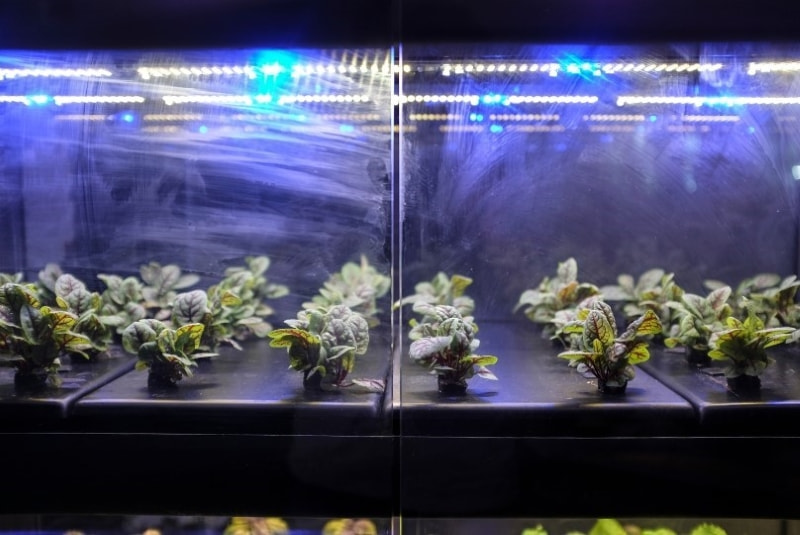
Investing in a reliable thermostat and sensors can help you keep track of the hydroponics water temperature. These devices are designed to monitor the water temperature and provide you with accurate readings. Depending on the type of device you choose, some models can even notify you if the water temperature goes beyond a specific range, ensuring that your plants grow under optimal conditions that you set.
How To Maintain Water Temperature In Hydroponics
Maintaining the ideal hydroponic reservoir water temperature is crucial for the success of your hydroponic system. The ideal water temperature for hydroponics is between 60-80°F. In this section, we’ll discuss three methods to help you regulate your hydroponic water temperature: Water Chillers, Aquarium Heaters, and Evaporative Cooling.
Water Chillers
To keep your hydroponic reservoir water temperature cool, consider utilizing a water chiller. A hydroponic water chiller is an external device that can be connected to your hydroponic system and is designed specifically for the purpose of cooling the nutrient solution. They work by circulating the water from the reservoir through the chiller and then pumping it back into the system at a lower temperature. This helps maintain the optimum temperature range and ensures your plants receive adequate oxygen and essential nutrients.
Cooling coil
A submerged cooling coil system can be used to reduce the water temperature. The coil is connected to a refrigeration unit or heat exchanger and circulates cold water to keep your hydroponics water temperature controlled.
Aquarium Heaters
On the other hand, if you’re wondering how to keep hydroponic water warm during colder periods, using an aquarium heater can be an effective solution. These heaters are designed for maintaining stable water temperatures in fish tanks, but can also be used in hydroponic systems. Simply submerge the heater in your hydroponic reservoir to distribute the heat evenly, and monitor the water temperature closely to ensure it remains within the desired range.
Evaporative Cooling
Evaporative cooling is an excellent natural method for adjusting your hydroponic reservoir water temperature. By increasing the circulation of air around your reservoir and utilizing an evaporative cooler or fan, you can rely on the principle of evaporative cooling to maintain an optimal water temperature. This method is particularly useful if you want to know how to cool hydroponic water naturally, as the evaporation process tends to lower the water temperature.
Insulation
Proper insulation is another crucial aspect in how to control water temperature in hydroponics. Insulating your hydroponic reservoir can prevent heat exchange and help maintain a stable water temperature. Consider insulating your reservoir with materials like foam board or reflective bubble wrap. Painting your reservoir white or with a reflective paint can also help reflect sunlight and reduce the amount of heat absorbed.
By employing these methods, you can effectively maintain your hydroponic water temperature, ensuring your plants receive the optimum conditions they need to grow and thrive.
Factors Affecting Water Temperature
Now we will discuss the main factors that affect water temperature in hydroponic systems. These factors include air temperature, light intensity, reservoir size, and material.
Air Temperature
Air temperature plays a significant role in determining the water temperature in your hydroponic system. A greenhouse or indoor garden with stable air temperatures will help maintain consistent water temperatures. To regulate air temperature, you may consider using heating or cooling systems, exhaust fans, or shade cloths, depending on the needs of your plants and the external environment. Find out what the best temperature for hydroponics is for your plants.
Light Intensity
The intensity of light is another factor that directly affects water temperature. Higher light intensity generates more heat, which could increase the temperature of your hydroponic reservoir. Outdoor hydroponic setups are more vulnerable to this. If the light intensity is too strong, you can opt for shade cloth or apply reflective paint to the greenhouse walls to reduce heat absorption. Conversely, during low-light conditions, you may need supplemental lighting to provide ample heat for optimal growth.
Reservoir Size
The size of your hydroponic reservoir influences the stability of water temperature. A larger reservoir can hold more water, which takes longer to heat or cool, resulting in more stable temperatures. Smaller reservoirs, on the other hand, are more susceptible to temperature fluctuations. When selecting the size of your reservoir, consider factors such as available space, plant requirements, and the need for consistent water temperature.
Reservoir Material
The material of your hydroponic reservoir can also impact water temperature. Some materials, such as plastic or metal, may absorb and transfer heat more readily than others, leading to faster temperature changes. To counteract this effect, consider insulating your reservoir with materials that have low thermal conductivity and paint the outside of the reservoir with reflective or white paint to minimize heat absorption from sunlight.
Nutrients and Their Relationship with Water Temperature
Elements Affected by Water Temperature
Water temperature plays a crucial role in the effectiveness of hydroponic nutrients. It can influence the solubility, availability, and uptake of nutrients by plants. The following hydroponic nutrients are affected by water temperature:
- Nitrogen (N): Nitrogen is one of the most critical elements for plant growth. Its availability can increase at higher water temperatures, which may lead to excessive vegetative growth and reduced fruiting.
- Phosphorus (P): Phosphorus is essential for root development, flowering, and fruiting. Its solubility decreases at lower water temperatures, which may limit its uptake by plants.
- Potassium (K): Potassium is vital for overall plant health and stress resistance. It also has a significant impact on water regulation within the plant. Like phosphorus, potassium’s solubility decreases at lower water temperatures.
- Calcium (Ca): Calcium is necessary for cell wall formation and strength, along with enzyme activity regulation. Its availability decreases when water temperature becomes too high or too low.
- Magnesium (Mg): Magnesium is essential for photosynthesis and overall plant health. It can become less available at higher water temperatures.
- Iron (Fe), Manganese (Mn), Zinc (Zn), Copper(Cu), Boron(B): The availability of these micronutrients can be influenced by changes in water temperature as well since they help regulate various enzymatic functions within plants.
To ensure optimal nutrient uptake by your hydroponic plants, it’s crucial to maintain an ideal water temperature range between 60°F to 80°F (15°C to 26°C). This will allow proper nutrient solution oxygenation and promote healthy root development while preventing harmful pathogens from thriving in the system.
Optimizing Nutrient Solution for Water Temperature
To ensure optimum nutrient uptake and plant growth, it’s crucial to optimize your nutrient solution based on water temperature:
- Monitor and adjust water temperature: Always keep a close eye on the water temperature in your hydroponic system. Use a reliable thermometer to measure the temperature and make any necessary adjustments to keep it within the ideal range.
- Use appropriate nutrient formulation: Different plant species have varying nutrient requirements. Choose the right nutrient solution formulation that suits your plants and hydroponic system.
- Monitor pH levels: A fluctuation in water temperature can affect the pH of the nutrient solution, which in turn affects the availability of nutrients. Maintain the pH level within the recommended range (5.5-6.5) for your plants.
- Aeration: Ensure proper oxygenation of the nutrient solution by adding air stones or using an air pump. Oxygen is necessary for root health and helps avoid issues like root rot.
By being attentive to the relationship between water temperature and nutrient uptake, you can optimize your hydroponic system for better yields and overall plant health.

